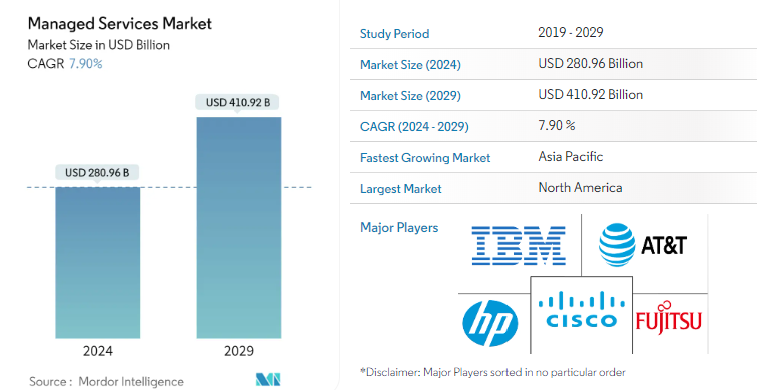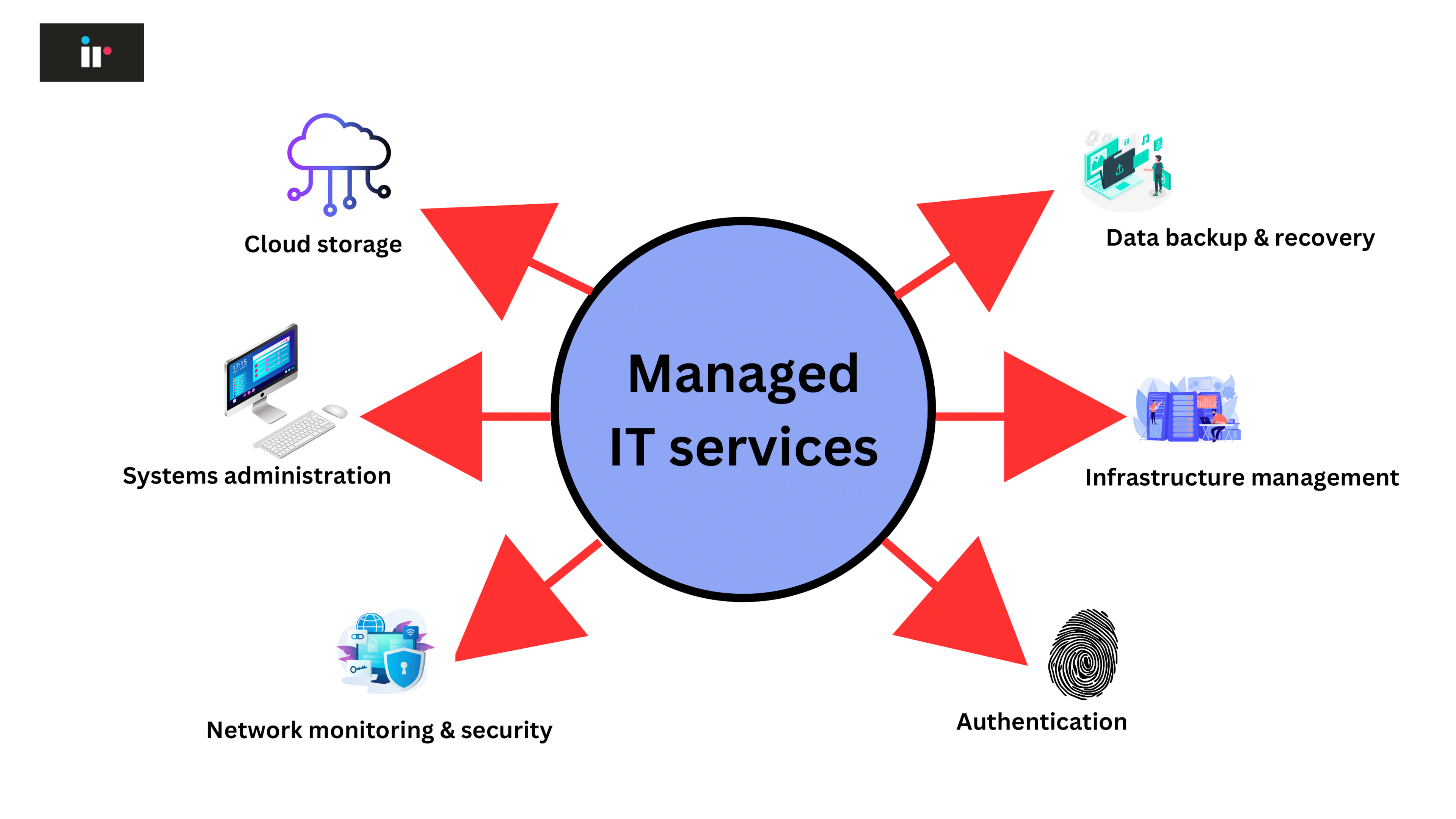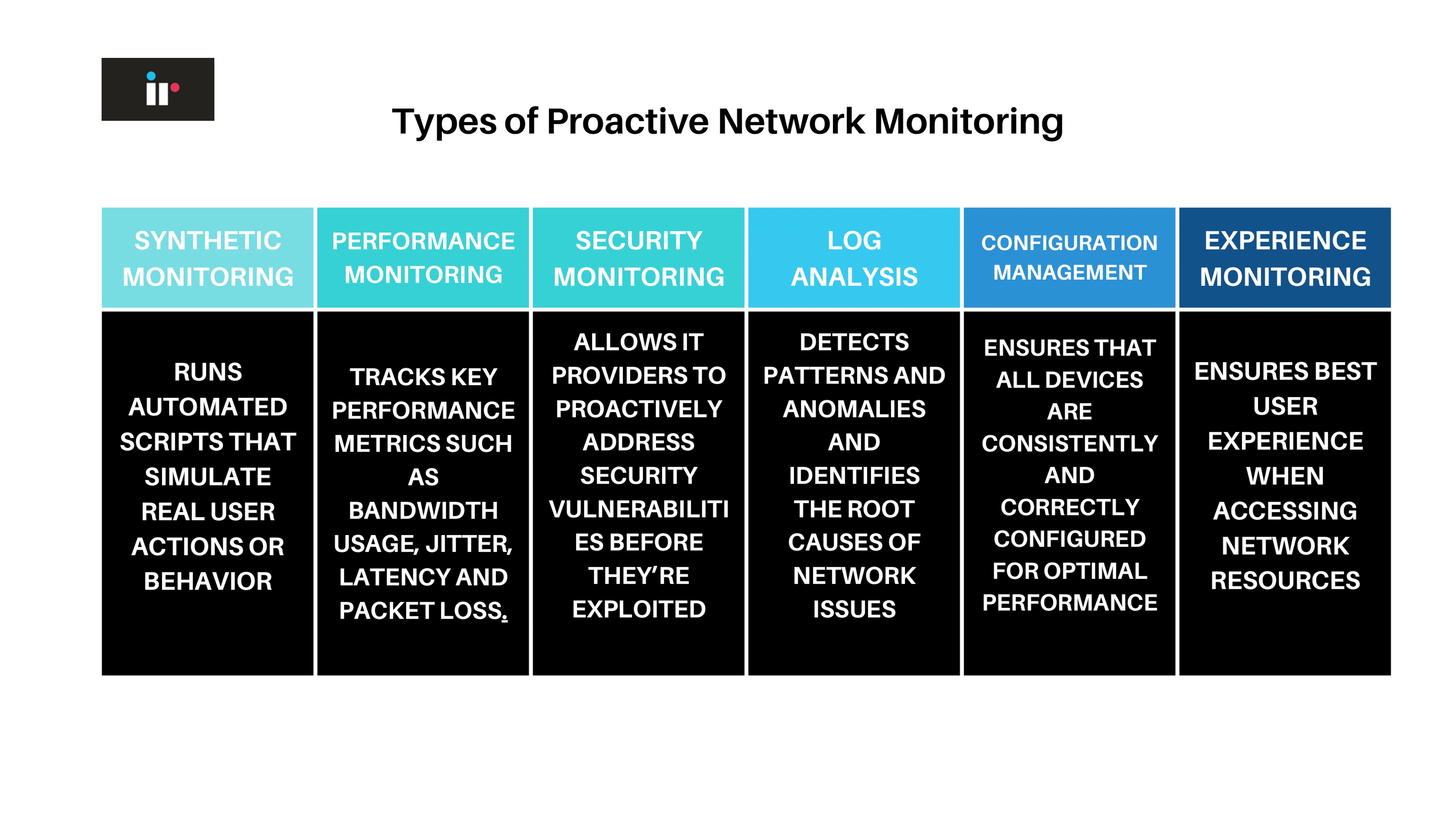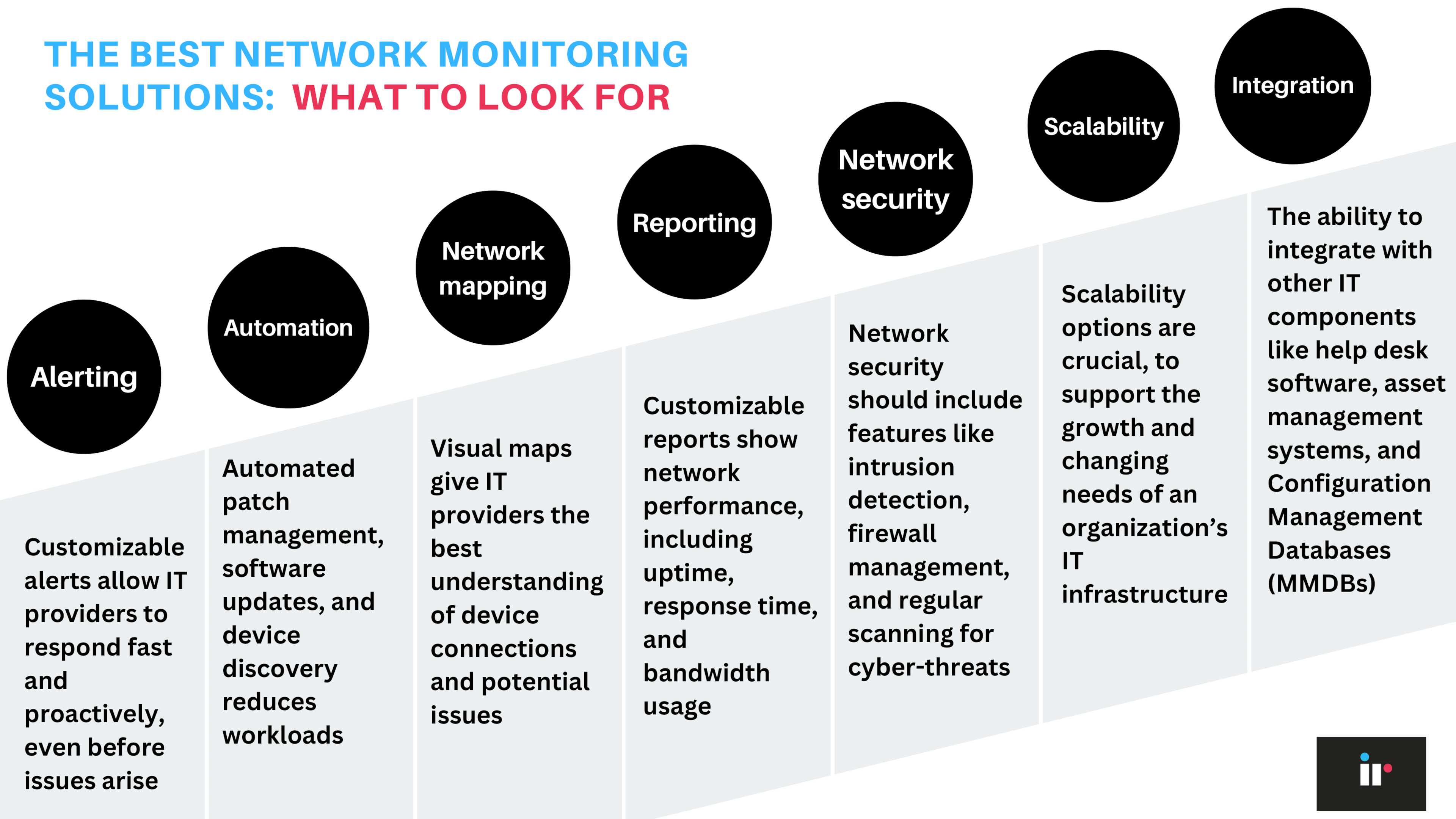Managed Service Providers are a critical element in today's modern business landscape. In fact the Managed Services Market size is estimated at USD 280.96 billion in 2024, and is expected to reach USD 410.92 billion by 2029, growing at a CAGR of 7.90% during the forecast period (2024-2029).

Image source: Mordor Intelligence
With the increasing pace of technological innovation, and the added complexity of remote working, most in-house IT services are no longer equipped to keep up with the demands of network management.
Whether it's SMBs or enterprise organizations, always-available IT support is an indispensable component of every business, and this means using the right MSP network monitoring software.
In this guide, we'll explain why organizations need the expertise of managed service providers, and why IR Collaborate software is the perfect partner for MSP network monitoring.
Find out more about how Managed Service Providers Can Drive Digital Transformation
What is MSP Network Monitoring?
Many organizations still using an in-house support team find their IT to be reactive rather than proactive. A break-fix approach to network management is no longer sustainable, as even a small amount of downtime can cost a huge amount in lost revenue, customer attrition, and employee frustration.
MSPs provide businesses with a range of IT services to help them manage their IT infrastructure, improve their IT security, and ensure business continuity.
By using the best available network monitoring software, they can oversee an entire network infrastructure, and troubleshoot in real time instead of waiting until something serious goes wrong.
Monitoring and maintaining a secure and reliable network is essential for businesses to thrive, and MSP network monitoring can provide a broad or focused service offering.
Due to client demands, many MSPs are increasingly offering more than basic services. For example, those businesses that need highly specialized security services can use an MSSP (Managed Security Services Provider).

The importance of network monitoring for MSPs
Network monitoring is the process of tracking and analyzing network performance, security, and infrastructure to ensure optimal functionality and uptime in customers' networks..
Robust network management software enables an IT provider to see whether their clients are experiencing network issues, and to make sure network operations are solid in terms of performance, uptime and availability of endpoints.
Network monitoring software empowers MSPs to gain complete visibility into all their clients' network assets, both on premises and in the cloud.
Types of Proactive Network Monitoring
Proactive network infrastructure monitoring allows MSPs to keep clients' networks safe, and customers' data protected. Proactive performance monitoring also encompasses a series of techniques that MSPs may initiate independently, or simultaneously, depending on the initial setup of the monitoring software.
Performance Monitoring
This involves tracking key performance metrics such as bandwidth usage, jitter, latency and packet loss.
By analyzing these metrics, IT providers can pinpoint potential issues and optimize the network's performance to make sure that the network is running smoothly.
Synthetic Monitoring
Synthetic network monitoring, sometimes referred to as active monitoring, runs automated scripts that simulate real user actions or behavior. This helps to identify and fix website availability, performance, and functionality issues before end users notice them.
Security Monitoring
This technique focuses on detecting potential security threats such as unauthorized access attempts, malware infiltration and data breaches. Active security monitoring allows IT providers to proactively address security vulnerabilities before they’re exploited.
Log Analysis
Analyzing log data from network devices and applications can uncover potential issues and help with problem-solving, by detecting patterns and anomalies and identifying the root causes of network issues.
Configuration Management
The management and monitoring of network device configurations is crucial to optimize performance and security. It ensures that all devices are consistently and correctly configured, to identify and resolve potential issues.
User Experience Monitoring
Monitoring the end-user experience is vital for identifying performance issues when accessing network resources, like web applications or cloud services.

Read more about Remote Monitoring and Management for MSPs in our comprehensive guide
How to choose the best network monitoring tools
Ideally, the best network monitoring tools should be cutting-edge, and have all the features listed below.
Real time monitoring
Every MSP network management solution should provide real-time monitoring of network availability and performance. This includes bandwidth utilization, server performance, application performance, and other key metrics.
Alerting
All MSP network management solutions should provide customizable alerts when issues arise. This allows IT staff to respond quickly and proactively. Alerts can be sent via email, SMS, or other communication channels.
Automation
Automation features such as automated patch management, software updates, and device discovery can help reduce the workload on IT staff and ensure that all critical tasks are performed when they need to be.
Network mapping
A network management solution should provide a visual interactive map of the network infrastructure, giving IT providers a clear understanding of how devices are connected and where potential issues may arise.
Reporting
Customizable reports showing network performance, including uptime, response time, and bandwidth usage are essential for historical stats. Reports can be generated on demand or scheduled for regular delivery.
Network security
A network management solution should include security features such as intrusion detection, firewall management, and regular scanning to help protect against cyber threats.
Scalability
All MSP network management solutions should be scalable, to support the growth and changing needs of an organization’s IT infrastructure.
Integration
The solution should be able to integrate with other IT systems and tools, such as help desk software, asset management systems, and Configuration Management Databases (MMDBs).

MSP Best Practices
Client expectations are increasing, as is industry competition. It's more important than ever for MSPs to pay close attention to customer needs and deliver outstanding service, or risk losing out to competitors.
Ensuring that IT environments run smoothly is a guarantee that both clients and revenue remain safe. Here are some best practices to help MSPs keep customers happy, while protecting your bottom line.
Multi-Tenancy and client management
MSPs should use monitoring tools with customizable access controls, that support multi-tenancy and client management. This keeps client networks isolated and secure. They should also provide clients with visibility into their network's performance and security from a centralized location.
Ensuring Data Security and Compliance
MSPs should ensure data security and compliance by implementing robust access controls, encryption, and data backup procedures, as well as regularly reviewing and updating data security and compliance policies. Monitoring tools should be compliant with relevant regulations such as GDPR, HIPAA, and PCI-DSS.
Reporting and Analytics
Clients need insights and visibility into network performance, security, and infrastructure, as data analytics help to identify trends and areas for improvement. MSPs should provide clients with regular reports and analytics, including key metrics such as uptime, response time, and bandwidth usage.
Integration
Monitoring tools should integrate with IT service management and help desk tools. Integration enables seamless incident management, problem management, and change management.
Providing Exceptional Customer Support
MSPs should provide ongoing customer support and success services, including training, onboarding, and ongoing technical support. Keeping a customer success program would ensure clients achieve their goals and objectives.
Quantifying the Benefits of Network Monitoring
Measuring the ROI and cost savings of network monitoring using data and analytics, will quantify the benefits of monitoring - and demonstrate value to clients. Metrics to include would be reduced downtime, improved performance, and increased customer satisfaction.
Case Studies and Success Stories
Sharing real world examples of network monitoring success demonstrates its value and attracts new customers. Examples could include improved network performance, increased customer satisfaction, and cost savings.
How IR Collaborate can help
More than ever, MSPs are in high demand for their services.
IR Collaborate's suite of world class network monitoring and management solutions help MSPs deliver higher quality services and manage a growing customer base with ease. Here's how.
Multi-tenant support
Collaborate helps you streamline management across customers. Leverage secure, API driven access to multiple client environments in a single application.
End-to-end insight across ecosystems
Collaborate's MSP Network monitoring for Service Providers delivers real-time insights and customizable displays with enable end-to-end visibility across hybrid, multi-vendor, multi-tenant ecosystems.
Meet SLAs with ease
Ensure customer satisfaction and deliver on SLAs with IR's real time alerts and rapid troubleshooting features. This means faster problem resolution and higher uptime, with the reporting and evidence to back it up.
Multi-vendor support
Cater to diverse customer needs with broad efficient coverage, and support for Microsoft, Cisco, Zoom, Avaya and others, as well as insight across networks, SBCs, and endpoints.
Value-added service for your customers
Differentiate your business and create new revenue streams. Access historical reporting to analyze trends and unique insights to help address your customers key concerns and tailor your service to their needs.
Learn how you can elevate your client services and redefine your business approach.





